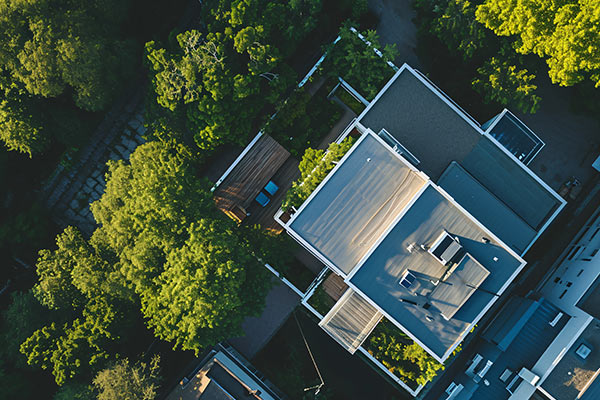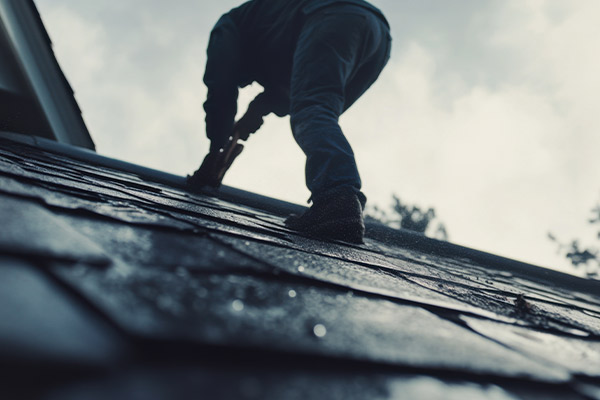Table of Contents
ToggleWhy do commercial buildings have flat roofs? This intriguing question has piqued the curiosity of many. Architects, in their quest for functionality and practicality, often opt for flat roofs in commercial structures. These sleek designs offer a range of benefits that make them a popular choice in the construction industry. From cost-effectiveness to enhanced usable space, flat roofs provide unique advantages that cater to the specific needs of commercial buildings. So, let’s explore the world of flat roofs and uncover their secrets.
Benefits of Flat Roofs
Flat roofs offer various advantages that make them a popular choice for commercial buildings. Understanding these benefits can help building owners and architects make informed decisions about their roofing needs.
Cost-Effectiveness
Lower material and labor costs are among the primary benefits of flat roofs for commercial buildings. The simplicity of the design and the reduced amount of materials required contribute to these cost savings. Compared to pitched roofs, which require more complex engineering and additional materials, flat roofs offer a more affordable option for construction. The straightforward installation process of flat roofs requires less time and fewer resources, further reducing expenses.
In the long run, flat roofs can lead to significant savings in maintenance costs. Routine inspections and repairs are easier to perform on flat surfaces, as they provide easy accessibility. This accessibility also simplifies tasks such as cleaning and servicing, minimizing the need for specialized equipment or extensive labor. Furthermore, due to their stable walking surface, flat roofs reduce the risk of accidents during maintenance activities.
Another cost-related advantage of flat roofs is the potential for reduced insurance premiums. The lower risk factors associated with flat roofs, such as a decreased likelihood of damage from wind or snow accumulation, can result in lower insurance costs for commercial buildings.
Installation Ease
Flat roofs offer architects and builders a simplified installation process compared to pitched roofs. With fewer complexities involved, including no need for steep slopes or intricate framing systems, the installation of flat roofs requires less time and fewer materials. This not only streamlines the construction process but also contributes to cost savings.
Furthermore, working on flat surfaces during roof installation provides safety benefits. The absence of steep inclines minimizes the risk of falls or accidents that may occur when working on pitched roofs. Architects can focus on completing the installation efficiently without compromising safety measures.
The design flexibility of flat roofs allows for accommodating larger structures without facing complex engineering challenges. The absence of pitch angles facilitates the construction of commercial buildings with spacious interiors while maintaining structural integrity.
Maintenance and Accessibility
One notable advantage of flat roofs is the ease of access they provide for routine inspections and maintenance tasks. Architects can easily access the roof surface, enabling them to identify and address any issues promptly. This accessibility helps prevent minor problems from escalating into major repairs, ultimately saving time and money.
Moreover, flat roofs simplify maintenance tasks such as cleaning and servicing. With a flat surface, it is easier to remove debris, leaves, or other accumulated materials, ensuring the roof remains in optimal condition. The simplicity of maintenance contributes to the longevity of flat roofs and reduces the need for frequent repairs or replacements.
The stable walking surface of flat roofs also minimizes the risk of accidents during maintenance activities. Contractors and technicians can navigate the roof safely without worrying about navigating steep slopes or unstable surfaces.
Energy Efficiency
Flat roofs offer architects the opportunity to design energy-efficient buildings. By incorporating energy-efficient materials into the construction of flat roofs, architects can help reduce heating and cooling costs for commercial buildings. Reflective coatings can be applied to the roof surface to minimize heat absorption, further enhancing energy efficiency.
Furthermore, flat roofs provide an ideal platform for incorporating insulation into building designs. By integrating insulation into the flat roof structure, architects can enhance energy conservation by reducing heat transfer and improving temperature regulation within the building.
Practical Uses of Flat Roofs
Flat roofs are not only cost-effective but also offer practical solutions for maximizing space in commercial buildings. Their design allows for various uses that can enhance the functionality of the building.
Equipment Storage
Flat roofs serve a practical purpose by providing ample space for equipment storage. HVAC units, solar panels, and other mechanical systems can be conveniently placed on the roof, optimizing the building footprint. By utilizing the roof for equipment storage, architects can free up valuable ground-level space for other uses such as parking or outdoor amenities.
Storing equipment on the roof also offers several advantages. First, it allows for centralized placement of all mechanical systems, making maintenance and repairs more accessible. Instead of having equipment scattered throughout the building, everything is conveniently located on the roof. This centralized approach saves time and effort when it comes to servicing the equipment.
storing equipment on the roof helps to maintain a cleaner and quieter indoor environment. With no noisy machinery occupying interior spaces, occupants can enjoy a more peaceful atmosphere within the building. The absence of bulky equipment also enhances the aesthetic appeal of the interior design.
Rooftop Gardens
One innovative use of flat roofs is the creation of rooftop gardens. These green spaces not only enhance the aesthetics of commercial buildings but also promote sustainability and employee well-being.
Rooftop gardens offer numerous environmental benefits. They help improve air quality by absorbing carbon dioxide and releasing oxygen through photosynthesis. The presence of plants on rooftops also helps to reduce urban heat island effect by absorbing and dissipating heat from the sun, leading to cooler temperatures in surrounding areas.
Moreover, these gardens provide recreational spaces for employees to relax and unwind during breaks or lunchtime. Being surrounded by nature has been proven to reduce stress levels and enhance mental well-being. Rooftop gardens also create opportunities for community engagement and social interaction among building occupants.
Types of Flat Roofing Systems
When selecting a flat roofing system for a commercial building, it’s important to consider the specific needs of the structure, including durability, maintenance requirements, and budget. Different materials offer distinct advantages, each suited to various applications.
EPDM Rubber Roofing
EPDM rubber roofing is a durable and weather-resistant option for flat roofs. Architects choose this material for its longevity and low maintenance requirements, making it a popular choice for commercial buildings. The installation process is relatively easy, thanks to the flexibility of EPDM roofing materials.
Built-Up Roofing
Built-up roofing is a traditional method that involves using multiple layers of materials for added durability. It excels in providing excellent waterproofing and insulation for commercial buildings. Architects appreciate its long lifespan and resistance to harsh weather conditions.
Modified Bitumen Roofing
Modified bitumen roofing is a versatile option that combines asphalt with polymer for enhanced performance. It is easy to install and can withstand extreme temperatures. Architects can choose from different finishes for aesthetic customization.
TPO Roofing
TPO roofing is a cost-effective and energy-efficient single-ply membrane option. It reflects sunlight, reducing cooling costs in commercial buildings. Architects appreciate the simplicity of installation and maintenance associated with TPO roofing.
PVC Roofing
PVC roofing is a durable and lightweight option known for its resistance to chemicals and fire. It has a long lifespan and requires minimal maintenance, making it ideal for various commercial applications. The reflective surface of PVC roofing also contributes to energy efficiency by keeping buildings cooler.
Drainage Solutions for Flat Roofs
Proper drainage is essential for maintaining the integrity and longevity of flat roofs. Without effective drainage systems, water can accumulate, leading to leaks, structural damage, and other costly issues.
Importance of Effective Drainage Systems
To prevent water pooling on flat roofs, effective drainage systems are crucial. Proper drainage is essential for maintaining the integrity and longevity of commercial buildings. Without adequate drainage, water can accumulate on the roof surface, leading to structural damage, leaks, and even collapse in extreme cases.
Architects understand the importance of ensuring water flows off the roof efficiently. Flat roofs have a low slope, which means that water doesn’t naturally drain as easily as it does on sloped roofs. Therefore, incorporating reliable drainage solutions is vital to prevent water from stagnating and causing problems.
Various Drainage Solutions
Architects employ different drainage solutions to ensure proper water flow on flat roofs. Two common options are internal drains and scuppers.
- Internal drains are installed at low points on the roof surface. They act as collection points for water and channel it through pipes to the building’s plumbing system or an external drain.
- Scuppers, on the other hand, are outlets located along the edge of the roof. They allow water to exit directly from the roof and onto downspouts or gutters, preventing it from accumulating.
The choice between internal drains and scuppers depends on factors such as building design, climate conditions, and local regulations. Architects carefully consider these factors when designing the drainage system for a commercial building with a flat roof.
Role of Regular Maintenance
While effective drainage systems are essential, they also require regular maintenance to ensure their functionality. Architects recommend periodic inspections and cleaning to prevent clogs and blockages that can impede water flow.
When to Replace Your Flat Roof
Over time, even the most durable flat roofs will show signs of wear and tear. Knowing when to replace your flat roof is crucial to maintaining the safety and integrity of your commercial building.
Signs of Replacement
Visible leaks and extensive wear are key signs that indicate a flat roof may need replacement. Leaks can cause water damage, compromising the structural integrity of the building. They can lead to mold growth and damage to the interior finishes. Extensive wear, such as cracks, blisters, or punctures, can weaken the roof’s ability to protect against weather elements. These signs should not be ignored, as they can worsen over time and result in costly repairs.
Lifespan of Flat Roofing Materials
The average lifespan of different flat roofing materials varies. Built-up roofs, made of multiple layers of asphalt and gravel, can last between 20 to 30 years with proper maintenance. Modified bitumen roofs, which consist of asphalt with added polymers for enhanced durability, have a lifespan of around 15 to 20 years. EPDM (ethylene propylene diene terpolymer) roofs have an average lifespan of 20 to 25 years. TPO (thermoplastic olefin) roofs typically last between 15 to 20 years. PVC (polyvinyl chloride) roofs have a longer lifespan, ranging from 20 to 30 years.
Importance of Professional Inspections
Regular professional inspections are crucial for assessing the condition of a flat roof and determining when it needs replacement. Architects or roofing specialists can identify early signs of deterioration that may not be visible to the untrained eye.
They can evaluate the extent of damage and provide recommendations for repair or replacement based on their expertise. Professional inspections also help in identifying any underlying issues that may contribute to the need for replacement, such as poor installation or inadequate drainage.
Final Thoughts from Roofs R Us in Blaine, MN
Flat roofs provide numerous benefits and practical applications for commercial buildings, making them a popular choice for maximizing space and functionality. They offer ideal surfaces for placing HVAC units, solar panels, and even creating rooftop gardens.
Various flat roofing systems, including built-up roofs and single-ply membranes, are available, offering durable and flexible options to suit different needs. However, effective drainage solutions are important to prevent water pooling and extend the lifespan of your flat roof.
At Roofs R Us in Blaine, MN, we emphasize the importance of regularly monitoring your flat roof’s condition and addressing maintenance or replacement needs promptly. This proactive approach ensures the safety and functionality of your building while avoiding costly repairs. Additionally, exploring innovative materials and sustainable design practices can further enhance energy efficiency and support environmental responsibility.
Our team at Roofs R Us understands the vital role flat roofs play in commercial buildings. By staying informed about the latest industry advancements, we help our clients make decisions that optimize the performance and longevity of their flat roofs. Whether you’re looking to install a new flat roof or maintain an existing one, Roofs R Us is here to provide expert guidance and top-quality service to ensure your commercial building remains secure, efficient, and sustainable for years to come.




